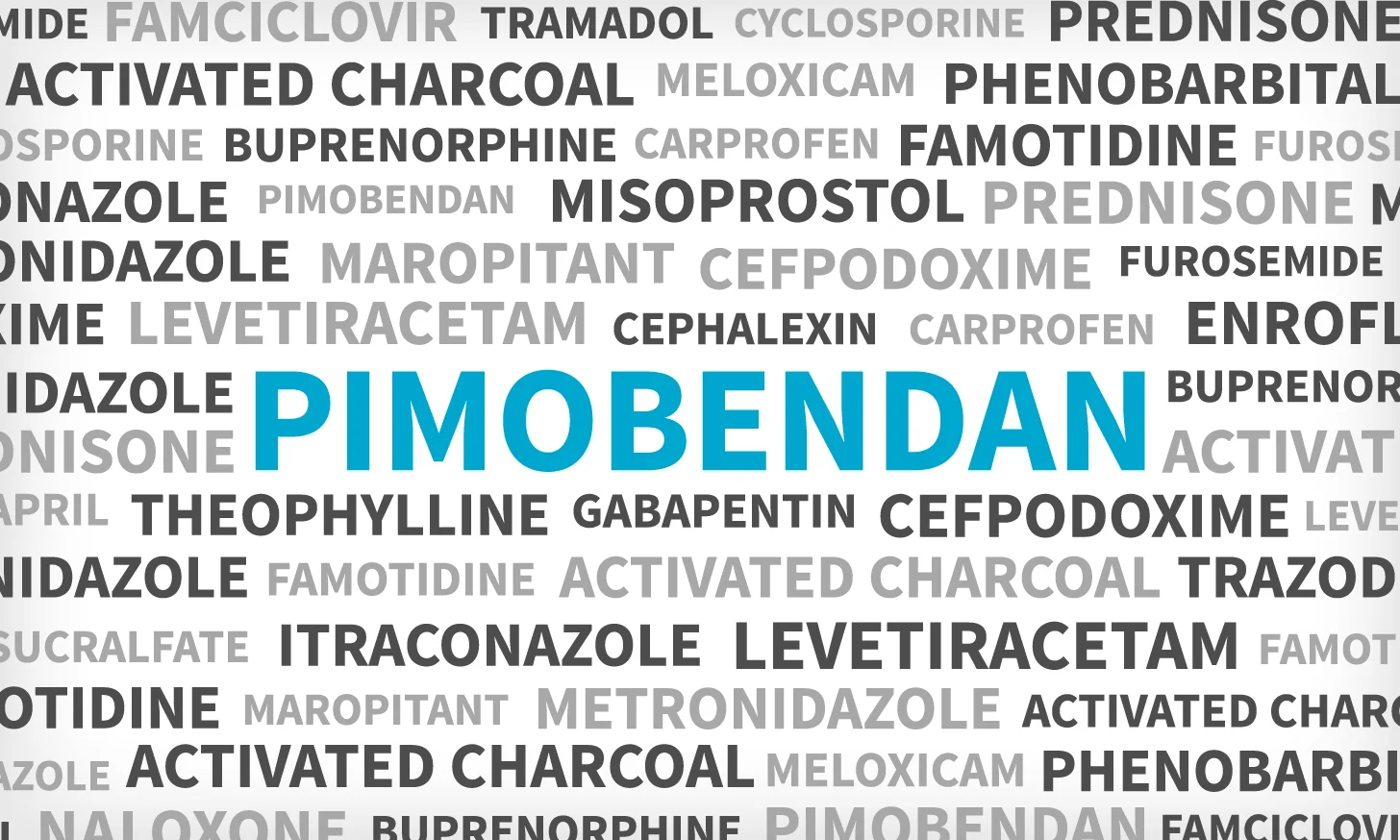Pimobendan

Inodilator (Systemic Drug)
Prescriber Highlights
Oral drug used to treat congestive heart failure (CHF) in dogs
Has been demonstrated to prolong the time to onset of CHF or cardiac-related death in dogs with stage B2 myxomatous mitral valve disease
Uses, Indications
Used primarily in dogs with CHF secondary to dilated cardiomyopathy or chronic mitral valve insufficiency
Studies have shown pimobendan can improve survival times and quality of life compared with standard treatment (ie, an ACE inhibitor and furosemide)
Limited evidence exists for use in cats with restrictive and dilated cardiomyopathy
Contraindications, Precautions, Warnings
Contraindications
Patients hypersensitive to pimobendan and those with hypertrophic cardiomyopathy, aortic stenosis, or any other condition in which an augmentation of cardiac output is inappropriate for functional or anatomic reasons
Precautions
Patients with uncontrolled cardiac arrhythmias
Warnings
Pimobendan use has not been evaluated in dogs younger than 6 months of age, dogs used for breeding, pregnant or lactating bitches, and dogs with congenital heart defects, diabetes mellitus, or other serious metabolic diseases
Side Effects
GI upset
Potential increased risk for arrhythmias
Drug Interactions
Simultaneous use with calcium antagonists (eg, verapamil, diltiazem) and β antagonists (eg, propranolol, atenolol) can lessen pimobendan-induced increases in heart contractility
Monitoring
Cardiovascular parameters, including ECG, blood pressure, echo studies, and clinical signs, should be used to monitor heart function
Client Information
Best given on an empty stomach
Most likely side effects are GI-related
Dosage Forms
The following product is labeled for veterinary use
Pimobendan chewable tablets: 1.25 mg, 2.5 mg, 5 mg, and 10 mg
—Compiled and summarized from Plumb’s Veterinary Drugs by Shannon Palermo, VMD
Information about this drug was adapted from Plumb’s Veterinary Drugs. Further details and more therapeutics can be found with a subscription at plumbsveterinarydrugs.com